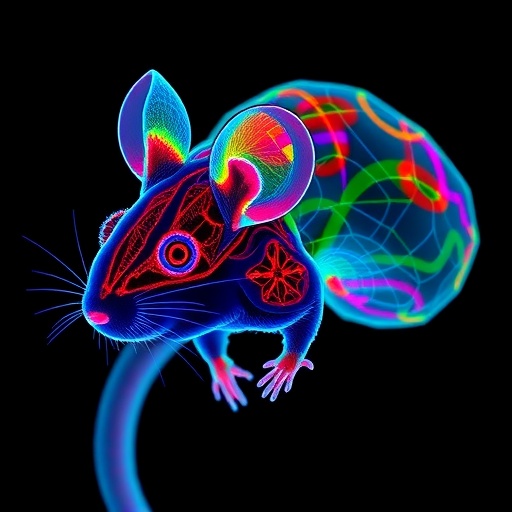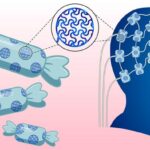
In an extraordinary leap forward in neuroscience, a groundbreaking study published in Nature Neuroscience unveils how the mouse retrosplenial cortex engages in spatial reasoning through recurrent neural dynamics. This discovery sheds light on the intricate neural computations enabling spatial navigation and cognitive mapping, areas of paramount importance for understanding memory, spatial awareness, and even neurological disorders. By meticulously probing the neural circuits involved, the research opens new doors for decoding how brains transform sensory inputs into coherent spatial representations, a challenge that has puzzled scientists for decades.
At the heart of this study lies the retrosplenial cortex (RSC), a complex brain region situated in the posterior part of the cerebral cortex. Although traditionally overshadowed by more famed spatial centers such as the hippocampus, the RSC is increasingly recognized as a hub integrating sensory, motor, and mnemonic information. The research team, led by Voigts, Kanitscheider, and Miller, employs cutting-edge electrophysiological recordings combined with sophisticated computational models to unravel how neural populations in the RSC encode spatial information through recurrent dynamics.
By “recurrent neural dynamics,” the authors refer to a pattern of activity where neurons within a circuit continuously influence each other over time, forming feedback loops that sustain and refine information processing. Unlike feedforward processes that transmit signals in a linear path, recurrent circuits can generate persistent activity patterns, crucial for tasks requiring memory and prediction. The study convincingly demonstrates that such recurrent dynamics in the RSC enable mice to maintain an internal sense of direction and position as they navigate complex environments.
.adsslot_Wl9pErVPB8{width:728px !important;height:90px !important;}
@media(max-width:1199px){ .adsslot_Wl9pErVPB8{width:468px !important;height:60px !important;}
}
@media(max-width:767px){ .adsslot_Wl9pErVPB8{width:320px !important;height:50px !important;}
}
ADVERTISEMENT
The experimental approach is remarkable for its depth and precision. Using in vivo recordings of large neuron ensembles in awake, behaving mice, the researchers trace how neuronal populations dynamically encode spatial variables like heading direction and positional context. These data are then analyzed using novel algorithms capable of deciphering the temporal evolution of population activity, revealing structured neural trajectories reflective of spatial computations. Such methodological rigor sets a new benchmark for understanding brain function during naturalistic behavior.
Crucially, the study bridges neural activity with behavior by correlating recurrent dynamics in the RSC with the animal’s ability to perform spatial tasks. When neural circuits are disrupted pharmacologically or optogenetically, the animals exhibit impaired spatial reasoning, underscoring the causal role of these recurrent interactions. This causality confirms that the RSC is not merely a passive relay but an active computational substrate for integrating and maintaining spatial memory traces.
The implications extend well beyond rodent navigation. The RSC has homologs in primates, including humans, where it is implicated in spatial memory, scene processing, and episodic memory retrieval. By elucidating the fundamental neural dynamics underlying spatial reasoning in mice, the study offers a framework to explore human brain function and dysfunction. This is particularly relevant for neurodegenerative conditions like Alzheimer’s disease, where RSC pathology correlates with disorientation and memory loss.
One fascinating aspect is how recurrent neural circuits can generate flexible representations adapted to varying environments. The research reveals that neural trajectories in the RSC are not rigid but can remap depending on sensory inputs and task demands, a hallmark of cognitive flexibility. This adaptive coding likely enables animals to navigate novel terrains efficiently, highlighting how recurrent dynamics support real-time environmental interpretation and decision-making.
Moreover, the study illuminates the interplay between the RSC and other brain regions, especially the hippocampus and anterior thalamic nuclei, known for their roles in spatial cognition. Through bidirectional connections, recurrent loops integrate inputs and motor feedback, orchestrating a cohesive spatial map. This network perspective emphasizes that spatial reasoning arises from distributed computations across interconnected regions, rather than isolated loci.
The broader computational principles identified may inspire advances in artificial intelligence and robotics. The recurrent dynamics observed in mammalian brains provide a blueprint for designing systems capable of continuous environmental integration, robust mapping, and flexible navigation. Such bio-inspired models could revolutionize autonomous agents, endowing them with enhanced spatial awareness and adaptability.
From a neuroscientific perspective, the study also highlights the importance of temporal dynamics in cognition. Persistent activity sustained by recurrent loops may underlie not only spatial memory but also working memory, decision making, and predictive coding. This suggests common motifs across diverse cognitive domains, pointing towards a unified theory of neural computation grounded in circuit dynamics.
Technically, the authors employ advanced techniques such as calcium imaging and closed-loop optogenetic manipulation to dissect the contributions of specific neuronal subtypes. This level of cellular specificity reveals how inhibitory and excitatory neurons coordinate to produce the observed recurrent activity, pinpointing microcircuit mechanisms. Such granular insights pave the way for targeted interventions that could modulate cognitive functions therapeutically.
Furthermore, the study tackles potential alternative explanations by rigorous control experiments and computational modeling. By simulating network dynamics, the authors validate that the observed activity patterns can generate stable and accurate spatial representations, ruling out random or feedforward-only models. This strengthens the argument that recurrent interactions are essential for the observed cognitive phenomena.
Importantly, the research also addresses how noise and variability inherent in neural systems are managed within recurrent circuits. Rather than being detrimental, certain degrees of variability confer robustness and flexibility, allowing adaptive responses to unexpected changes in the environment. This nuanced understanding of circuit dynamics challenges simplistic views of neural noise as a flaw, positioning it as a functional element in cognition.
The discovery has profound ramifications for understanding brain disorders. Since the RSC is vulnerable in early Alzheimer’s and other dementia-related diseases, insights into its recurrent circuitry might reveal novel biomarkers or therapeutic targets. Modulating recurrent activity pharmaceutically or via neuromodulation could restore spatial memory functions, improving quality of life for affected individuals.
Finally, this pioneering work exemplifies the power of interdisciplinary collaboration, merging neuroscience, computational modeling, engineering, and behavioral analysis. It sets a new standard for exploring complex brain functions in a manner directly linked to behavior. The study by Voigts and colleagues not only illuminates the computational elegance of the retrosplenial cortex but also charts a path toward unraveling the mysteries of cognition itself.
Subject of Research: Neural mechanisms of spatial reasoning in the mouse retrosplenial cortex via recurrent neural network dynamics.
Article Title: Spatial reasoning via recurrent neural dynamics in mouse retrosplenial cortex.
Article References:
Voigts, J., Kanitscheider, I., Miller, N.J. et al. Spatial reasoning via recurrent neural dynamics in mouse retrosplenial cortex. Nat Neurosci (2025). https://doi.org/10.1038/s41593-025-01944-z
Image Credits: AI Generated
Tags: brain regions involved in spatial awarenesscognitive mapping and memoryelectrophysiological recordings in neuroscienceintegrating sensory and motor information in brainmouse model studies in cognitive sciencemouse retrosplenial cortexneural circuits and spatial navigationrecurrent neural dynamics in brainsensory input processing in brainspatial reasoning dynamics in neurosciencespatial representations in the brainunderstanding neurological disorders through brain research



